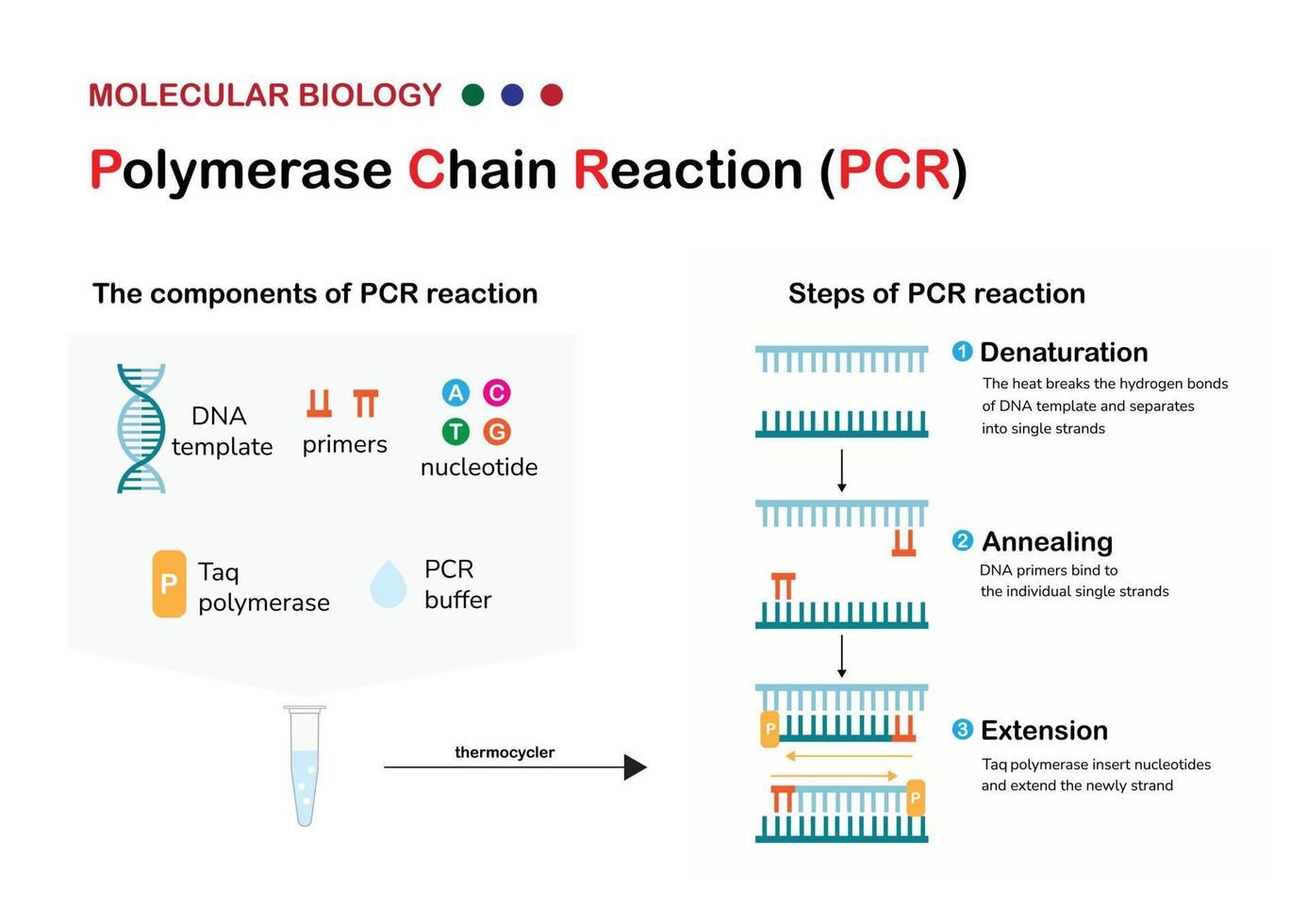The Polymerase Chain Reaction (PCR) is a revolutionary molecular biology technique that allows scientists to amplify specific DNA sequences exponentially. At the heart of this process lies a crucial enzyme: DNA polymerase. Understanding why DNA polymerase is indispensable to PCR requires a deep dive into its unique properties and the mechanics of DNA replication. The necessity of this enzyme stems from its catalytic prowess in synthesizing new DNA strands, thereby enabling the exponential amplification central to PCR’s utility.
DNA polymerase acts as a molecular scribe, meticulously copying DNA templates to produce faithful replicas. Its function in PCR mirrors its natural role in cellular DNA replication, but with key modifications to suit the in vitro environment. While several enzymes could potentially bind to DNA, DNA polymerase is uniquely equipped to catalyze the phosphodiester bond formation between nucleotides. Without this capability, the targeted amplification of DNA, which is the very essence of PCR, would be an impossibility.
Consider DNA polymerase as the master builder on a construction site. It doesn’t just randomly place bricks; it meticulously assembles them according to a pre-existing blueprint. In PCR, this blueprint is the original DNA template, and the “bricks” are the deoxynucleotide triphosphates (dNTPs) – the building blocks of DNA. The polymerase ensures that each nucleotide is added in the correct order, dictated by the complementary base pairing rules (Adenine with Thymine, Guanine with Cytosine). This precision is absolutely crucial for maintaining the fidelity of the amplified DNA fragments.
One of the most compelling reasons for using DNA polymerase in PCR is its inherent need for a primer. PCR is dependent on short sequences of single-stranded DNA known as primers. These primers, typically 18-25 nucleotides in length, bind to the target DNA sequence flanking the region to be amplified. DNA polymerase can’t simply start synthesizing DNA de novo. It requires a pre-existing 3′-OH group to add nucleotides onto. These primers provide that necessary starting point, functioning like a molecular launchpad for the polymerase.
The specificity conferred by the primers is paramount. The primers effectively dictate which region of the DNA gets copied. This ensures that only the desired target sequence is amplified, avoiding the generation of a heterogeneous mixture of DNA fragments. Without the need for a primer, DNA polymerase would initiate replication randomly across the genome, rendering PCR ineffective for targeted amplification.
Furthermore, the thermostability of certain DNA polymerases, particularly Taq polymerase (isolated from the thermophilic bacterium *Thermus aquaticus*), is a critical factor. PCR involves repeated cycles of heating and cooling. The heating step, reaching temperatures as high as 95°C, is necessary to denature the double-stranded DNA, separating it into single strands. Most enzymes would be irreversibly denatured at these high temperatures, rendering them inactive. However, Taq polymerase remains stable and functional, allowing it to withstand the harsh thermal cycling conditions of PCR. This thermal resilience is a major advantage, obviating the need to add fresh enzyme after each denaturation step, greatly simplifying and automating the PCR process. Think of it as a tireless worker who can thrive under extreme duress.
Imagine trying to build a house with a hammer that melts in the sun. Useless, right? That’s what a non-thermostable polymerase would be like in PCR. The robustness of Taq polymerase, and other thermostable polymerases, is therefore indispensable. In addition to Taq, other thermostable polymerases with enhanced features, such as higher fidelity or processivity, are also used in specific PCR applications.
The processivity of DNA polymerase also contributes to its suitability for PCR. Processivity refers to the enzyme’s ability to add multiple nucleotides to a growing DNA strand without dissociating from the template. A highly processive polymerase can synthesize longer DNA fragments more efficiently, reducing the likelihood of premature termination and increasing the overall yield of amplified product. This is particularly important when amplifying longer DNA sequences. The polymerase acts as a marathon runner, covering long distances without stopping.
Moreover, some DNA polymerases possess proofreading activity, thanks to an exonuclease domain. This activity allows the enzyme to remove incorrectly incorporated nucleotides, improving the accuracy of DNA replication. While not all polymerases used in PCR have proofreading capabilities, those that do are preferred for applications where high fidelity is critical, such as DNA sequencing or cloning. This built-in error correction mechanism minimizes the accumulation of mutations during PCR amplification.
In summary, the employment of DNA polymerase in PCR is not merely a matter of convenience, but a fundamental requirement dictated by the enzyme’s unique catalytic properties, primer dependence, thermostability, processivity, and proofreading capabilities. Without DNA polymerase, the elegant and powerful technique of PCR, with its myriad applications in research, diagnostics, and biotechnology, would simply not exist. It truly is the keystone of this transformative molecular biology technique.










Leave a Comment